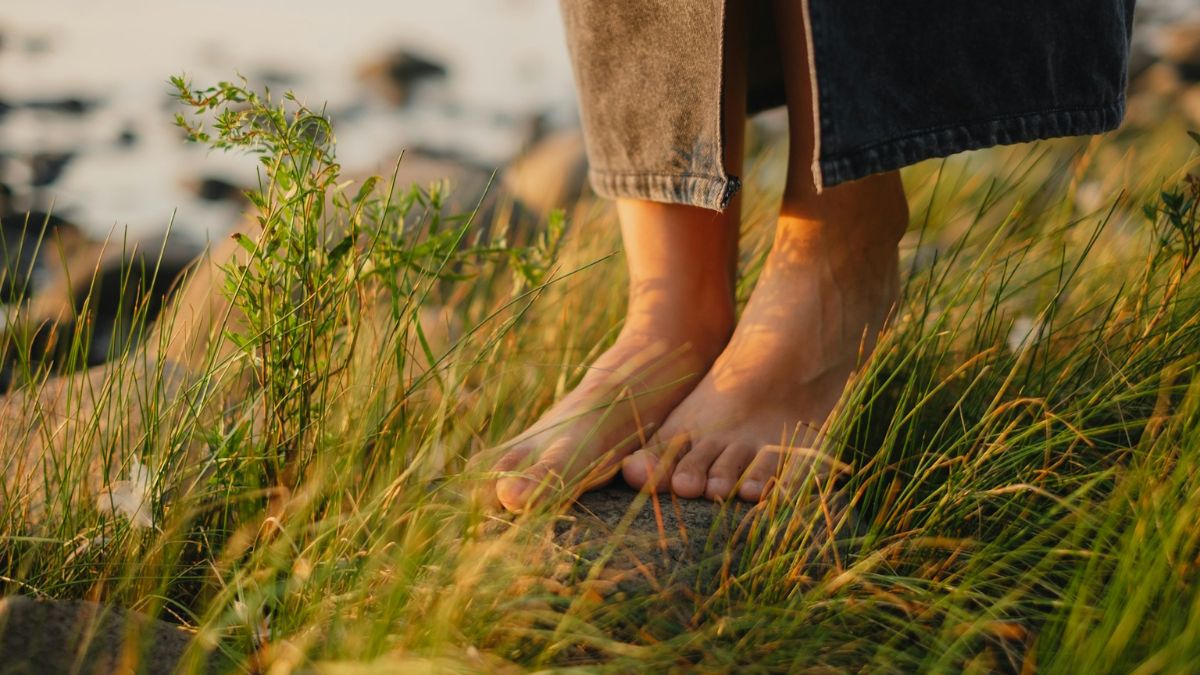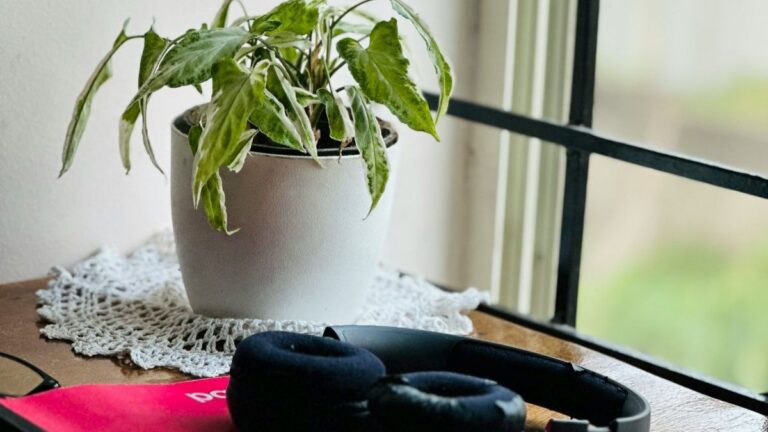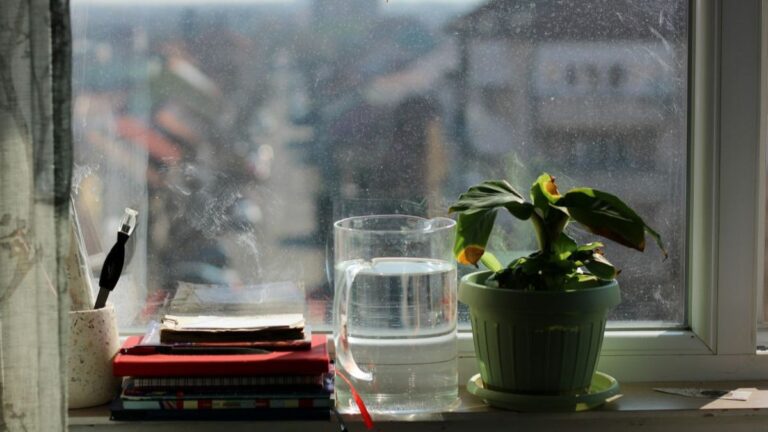Grounding Without Gadgets
Is grounding without gadgets possible? You don’t need equipment to feel steadier. Bare feet, a longer exhale, and focused attention can help your system settle in a minute or two. Grounding is less about hacks and more about contact… real feet, real earth, real breath.

Why grounding helps (plain language)
Your body carries charge, so does the ground beneath you. When you make simple, safe contact and breathe a little slower, the nervous system often reads “safe enough” and down‑shifts. Attention stops hovering in thoughts and anchors into sensation… temperature, texture, weight. From there, choices come easier.
Grounding is permission to arrive where your body already is.
When to use it
- After screens when your eyes feel buzzy.
- Between tasks to prevent mental scatter.
- Evenings when you feel wired‑but‑tired.
- Before conversations that matter.
Orientation & safety
- Choose a safe surface (grass, earth, wood, stone). Avoid sharp debris, extreme temps, or unsafe areas.
- If outdoors isn’t possible, use indoor wood or tile and the same attention cues.
- If you feel light‑headed, stop and breathe normally; sit down if needed.
Micro‑Practice: 2‑Minute Ground, Breathe, Notice
Time: ~2 minutes
- Contact: stand barefoot (or in thin socks) on grass, earth, wood, or tile. Feel three contact points under each foot.
- Exhale first through the nose; let shoulders drop.
- Breathe in for 4, out for 6… six cycles. If it helps, add a soft closed‑mouth hum on each exhale.
- Notice: name three sensations (temperature, texture, weight) without judging.
- Finish: step off slowly; take one steadying breath and choose your next step.
Why it works: Steady contact + slightly longer exhales cue the system toward regulation. Attention shifts from rumination into felt sense, which many experience as calm and clarity.
Variations (choose what fits today)
- Hands‑to‑tree: rest a palm on a tree or wall; breathe 4/6 for one minute.
- Seated: feet flat on the floor, spine tall, same breath and noticing.
- Humming assist: keep the breath even and add a quiet hum on the exhale if that feels good.
What you’ll likely feel
In the first minute, changes are usually subtle rather than dramatic. The breath drops a little lower, shoulders soften, and the mind has a touch more room between thoughts. Feet may feel warmer or heavier as attention settles into contact points; some people notice tingling, a spontaneous sigh, or a yawn—that’s the system shifting gears. If nothing happens, that’s still useful data. Stay with the two minutes and watch for small signals across the next hour (clearer choices, fewer micro‑flares). Grounding is less about chasing a feeling and more about rehearsing a steadier baseline your body can find again.
Make‑it‑yours (quick troubleshooting)
No grass? Wood or stone is fine; even indoors, attention + breath + contact still help. If going barefoot isn’t appropriate, try thin socks or rest a palm on a tree/wall and run the same 4/6 breath. Cold or rainy? Stand at the threshold and place attention on your soles while you breathe. If you feel light‑headed, stop and breathe normally; sit down if needed. On heavy days, make it one minute: contact → three 4/6 breaths → name three sensations. Consistency beats intensity; two short practices today often outpace one long one tomorrow.
Reflection: What changed on contact?
Pause for a moment and notice what rises.
- Where did contact feel clearest… heels, balls of the feet, or toes?
- Did the exhale lengthen naturally? Did a hum feel comfortable?
- What small moment in my day could use 120 seconds of grounding?
FAQ
Do I have to be barefoot on grass?
No. Wood, stone, or indoor flooring works. Attention + breath + contact are the core.
Is concrete okay?
Yes, use what you have. If outside isn’t feasible, stand on wood/tile or rest a palm on a tree/wall and breathe.
I have sensitive feet. Ideas?
Try thin socks, shorter bouts, or a seated version with feet flat. You can also use the palm-on-tree variation.
How quickly should I notice change?
Often within 1–2 minutes: longer exhales, softer shoulders, steadier attention.
Any safety notes?
Choose safe, clean surfaces; avoid extreme temps or debris. If you feel light-headed, stop and breathe normally.
Related reading
- Coherence Minutes: Heart‑Breath Sync for Focus
- Sound as Medicine: Humming, Not Hustling
- Your Morning Field: Light, Sound, and Stillness
- Calm Screen/EMF Hygiene – /calm-screen-hygiene/
- Category hub: Energy & Frequency Medicine
- Start Here
Clinical services are provided within my scope as a licensed clinical psychologist (CA, RI). My Doctor of Integrative Medicine credential is a doctoral degree with board certification by the Board of Integrative Medicine (BOIM) and does not represent a medical/physician license. All educational content is for learning only and is not a substitute for professional medical or psychological care.
About Dr. Nnenna Ndika
Dr. Nnenna Ndika is an integrative, trauma-informed clinical psychologist (CA/RI) and Doctor of Integrative Medicine (BOIM). Her work bridges neuroscience, somatic regulation, and environmental rhythms—simple, minimalist practices that help the body remember safety and the mind regain quiet strength. Silent Medicine is educational only; it does not replace medical or psychological care. Begin with Start Here or explore Mind-Body Healing.






